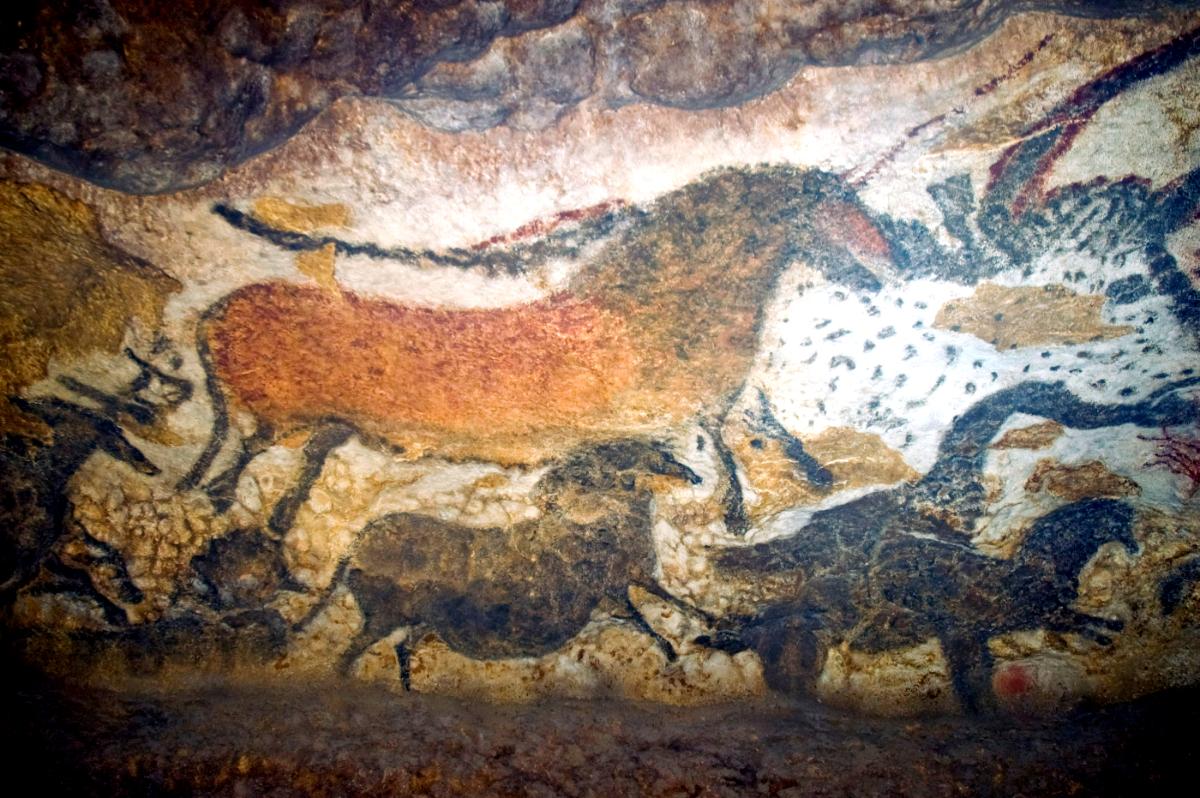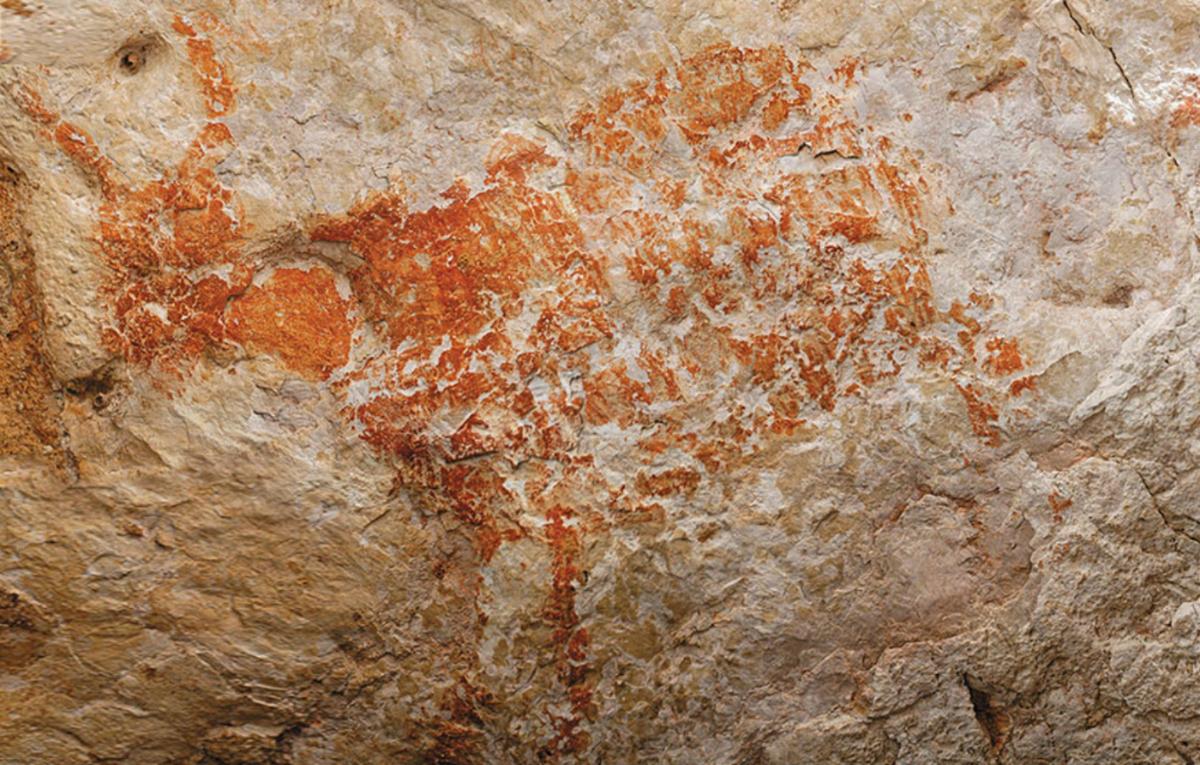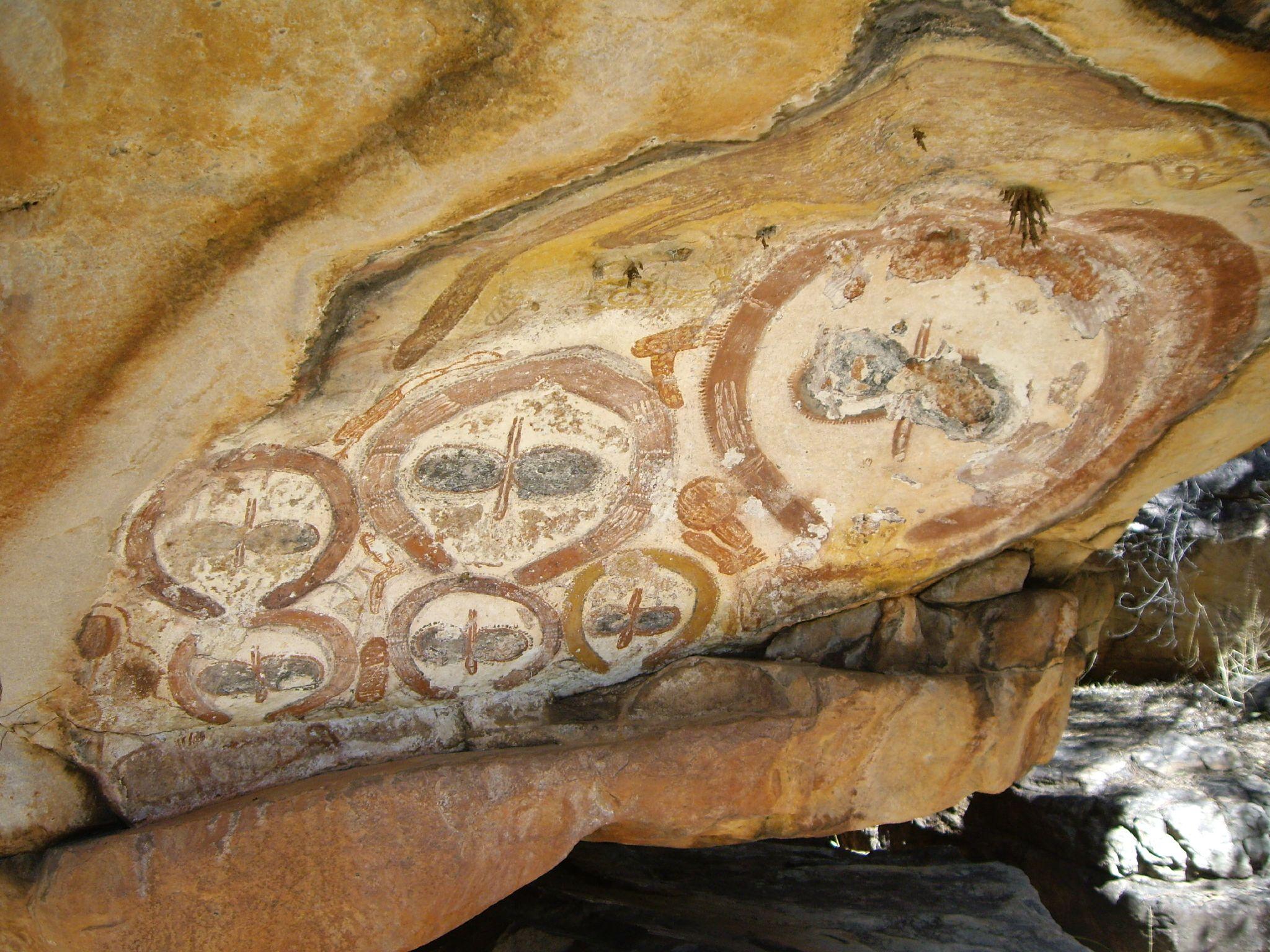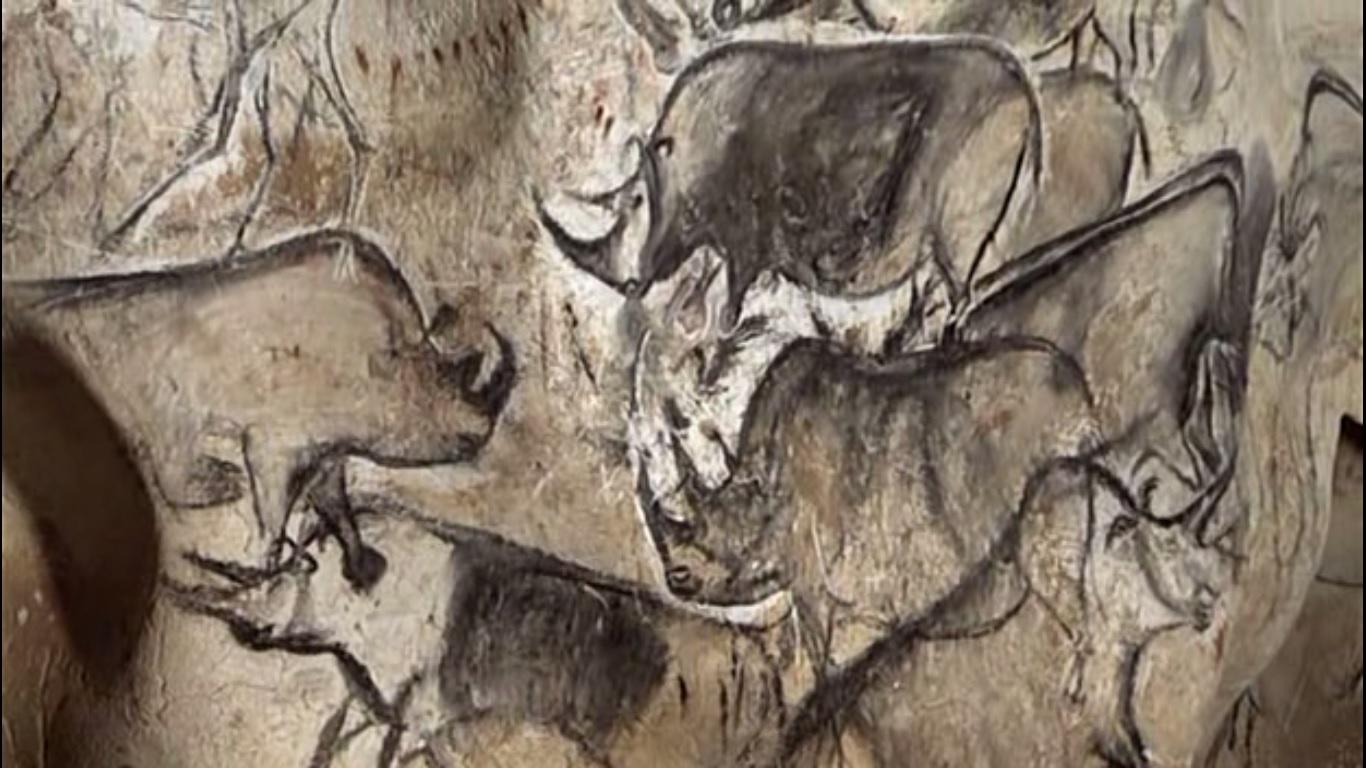As archaeologist Tammy Hodgskiss told Discover Magazine, “People may say ochre is the earliest form of symbolism, but there’s more to it… ochre shows how our brains were developing, and that we were using our environment. It bridges the divide between art and science.”
Red ochre is also the apparent medium used in art that appears in caves in Western Australia, and is believed to have been created about 50,000 years ago. Again, the fact that humans were living across oceans from one another experimenting with primitive paints lends itself to the idea that art is an innate force within the human species.
Another common tool that was used to make cave art is charcoal, which is believed to be responsible for many of the drawings that appear in Chauvet Pont d-Arc Cave in France, where the oldest known cave paintings in Europe are located. The charcoal remnants collected in the cave have been carbon traced to the Ice Age, and appear to have been made from burnt pine trees. Because other charcoal made from pine trees has been discovered in various caves that were thought to be used as living spaces during the Ice Age, scientists wonder if these early artists actually had a preference for pine charcoal over other possible sources. It’s also helped scientists reimagine how cold it would’ve been for humans to be forced into these caves as their main living spaces.




























